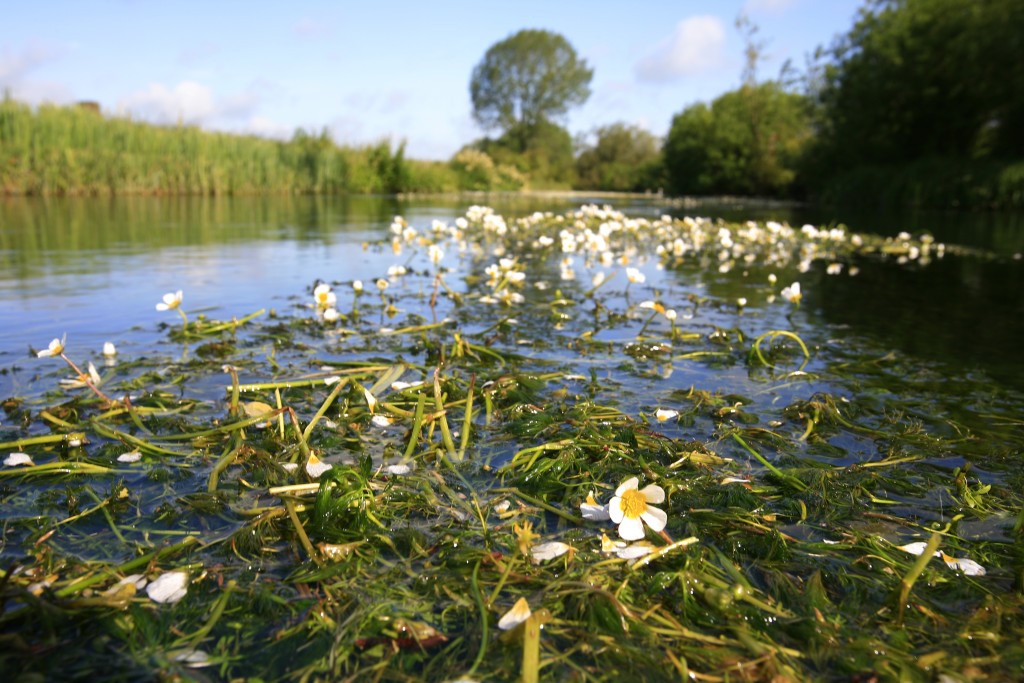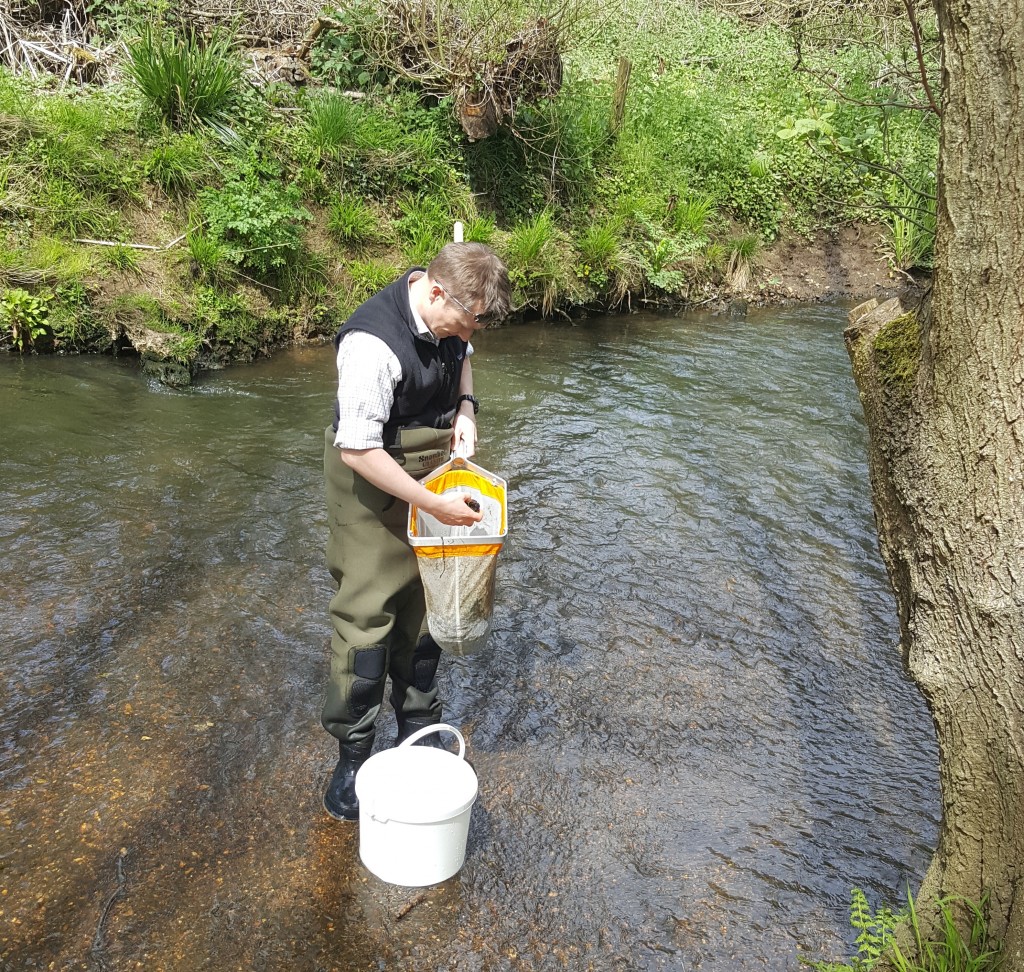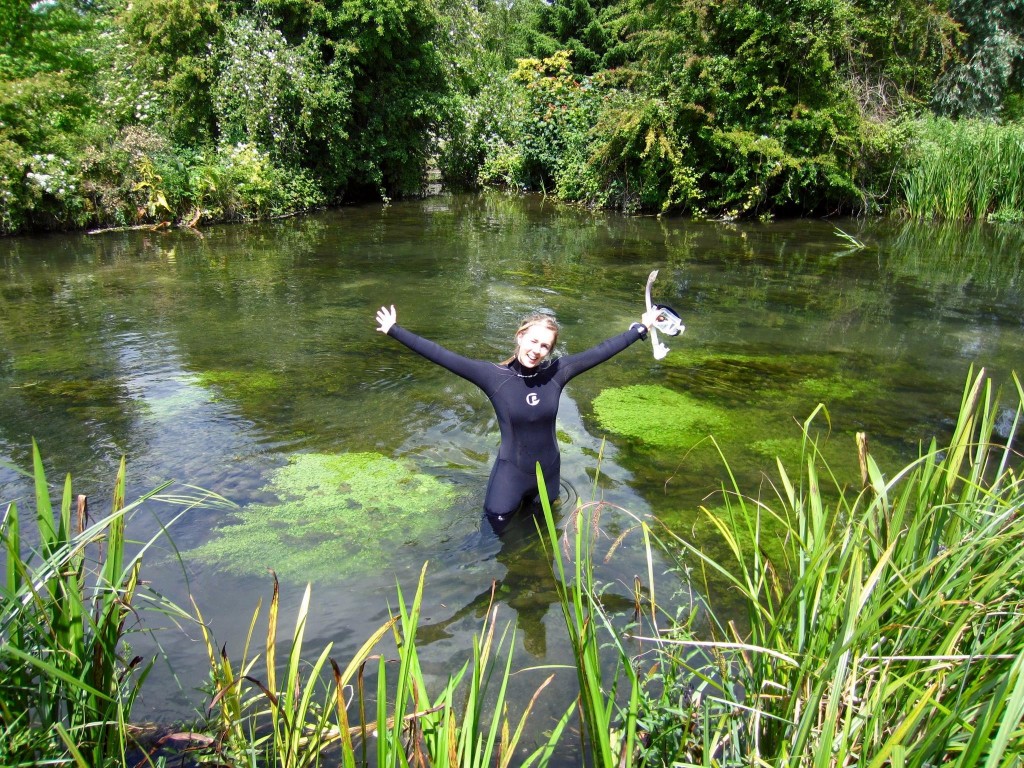The first chalk stream I visited was the Test in Stockbridge. I was young and it was all rather exciting because for the first time in my life I was able to see fish close up in the river through the crystal clear water. I’m from up north and of course we have fish, but not chalk streams, and so they weren’t as easy to see. This first experience really captured my imagination.
Jumping forward, *cough, several years, I now understand more about why chalk streams like the Test are so important and at WWF I spend a lot of time working to make sure they are better protected.
What’s a chalk stream and why do they matter?
The lion’s share of the world’s chalk streams are found in England. That’s about 220, and they are found across a band of chalk that runs from Yorkshire, through Lincolnshire and East Anglia, and into the South-East. They even reach as far west as Devon. The rest are found in northern France.
This unique and rich habitat provides a haven for wildlife like the mayfly, otter, kingfisher and trout.
They really are quintessentially English – their lush green river banks and cool, clear water conjure up memories of Sunday walks, lazy picnics and Wind in the Willow.

Riverfly survey reveals not all is as it should be
In 2015, we published a report – The State of England’s Chalk Streams – which showed that only 23% of our chalk streams could be considered healthy. Furthermore, only 12 chalk streams (out of approximately 220) were protected, which were all are failing their conservation objectives. Physical modifications, taking too much water from them, pollution from sewage works, septic tanks and agriculture were all identified as key pressures causing failure.
Recently we commissioned further research to update these figures. Shockingly, the situation has got worse and now only 19% of chalk streams can be considered healthy. And going forward even fewer chalk streams will be monitored by the Environment Agency which will ultimately mean we’ll know less about their health.
This is why a recent riverfly survey by Salmon and Trout Conservation UK is so important, and the results so devastating. In essence, the survey revealed that out of the 120 sites surveyed, nearly all were impacted in some way but chalk streams were the worse. In fact, there were only 14 pristine, unimpacted sites out of the sites sampled.
Riverfly, like the mayfly, caddisfly and stonefly, play a crucial role in the aquatic food chain – they act as an indicator for the health of the whole river so you can tell an awful lot about other species by monitoring their health.

Another headline that stuck out for me was the fact three of our most protected chalk streams – the Itchen in Hampshire, the Lambourne in Berkshire and the Wensum in Norfolk, rank very poorly. They all contained low riverfly richness. And the Test – the river I fell in love with when I was young – riverfly life here is poor with many significant species ‘impoverished’. Not the news I wanted to hear.
Join the revolution – become a citizen scientist
It’s clear that now, more than ever, our rivers need all of us. Luckily, there are some fantastic ways we can get involved and really help.
The Riverfly Partnership is an amazing network of anglers, conservationists, scientists and local communities, who all work together to protect the future of our rivers and chalk streams. There’s basically an army who go out, sample the life at the bottom of the river and record the number of these indicator species. The results don’t then vanish into the ether – they are uploaded onto the national website and the Environment Agency responds if an issue is flagged by the data.
Through our WaterLIFE project, we’ve also produced a handy citizen science and volunteer monitoring toolkit which points to guidance, tools and equipment that can be used for citizen science.
So don’t wait, get out there and start exploring your rivers and the wildlife that live in them!
Or do what I do and get your wet suit on and dive in! For those of you who might feel a tad trepidatious about venturing for a swim in your local river, read this piece from another member of the team about how she found her first wild swim!

